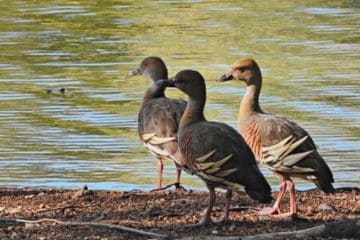Potential Impacts in Australia
If H5N1 arrives in Australia the consequences are hard to predict, but the evidence overseas shows any bird or mammal species could be susceptible.
H5N1 is likely to be particularly catastrophic for wetland and sea birds, some raptors, seals and sea lions, as well as highly threatened species.
Potential victims include the majestic black swan, which, unlike its white cousin, lacks some of the immune-related genes needed to fight off bird flu and other viral illnesses.
Australia’s Response
Australia has been highly effective in controlling bird flu in poultry by culling infected flocks and eliminating the virus.
But managing bird flu in wildlife presents a far greater challenge, as the virus cannot be eradicated.
The focus must shift to limiting spread and impact through surveillance, disturbance prevention, carcass removal (where feasible) and potential vaccination of at-risk species.
Advocacy by the Invasive Species Council has spurred the Australian Government into action. The federal, state and territory governments are now collaborating to prepare for the potential arrival of bird flu this spring.
Wildlife Health Australia has prepared useful resources for decision-makers and wildlife managers, with mitigation toolboxes outlining recommended response options.
Most urgent is the preparation of site-specific and species-specific plans to minimise disturbance and spread and to keep humans safe.
To date, preparations have been patchy and time could be running out.
What’s Next?
As the last continent free of H5N1 Australia has had the benefit of time to prepare. More resources, collaboration, planning and research are needed before bird flu arrives.
The Invasive Species Council is calling for governments to urgently:
- Establish a national taskforce: Create a taskforce with biosecurity, environmental agencies, wildlife experts, and non-government participants.
- Appoint bird flu coordinators in each state and territory with allocated budgets. Set national milestones and track preparedness.
- Develop site and species plans: Support response plans for key sites and wildlife populations.
- Engage Indigenous rangers, researchers, birdwatchers, and land managers in surveillance efforts.
- Create national plans: Formulate plans for monitoring, communications, research, vaccination, and other critical issues. Address challenges like carcass removal and rescue measures for threatened species.
- Focus on vaccination: Research and identify highly susceptible species. Conduct vaccination trials for at-risk species.
- Expand knowledge: Prioritise research to fill knowledge gaps about H5N1.
The Bigger Picture
The ongoing threat of bird flu exposes critical gaps in Australia’s biosecurity system.
While Australia has effective measures for eradicating newly arriving invasive species and addressing chronic threats, we lack a national collaborative approach for managing new and emerging non-eradicable threats, like H5N1.
Currently, responsibility falls to individual states and territories, which is inadequate for responding to threats of this scale and severity.
Australia needs new national processes, including funding arrangements, to foster collaborative and effective responses to emerging severe invasive threats that cannot be eradicated.
Unfortunately, H5N1 will not be the last catastrophic new invasive species to arrive on our shores.
Find out more
How you can help: Learn about what role you can play in protecting Australia from bird flu
If you spot clusters of sick or dead birds, do not handle them. Call the Emergency Animal Disease Hotline at 1800 675 888.










